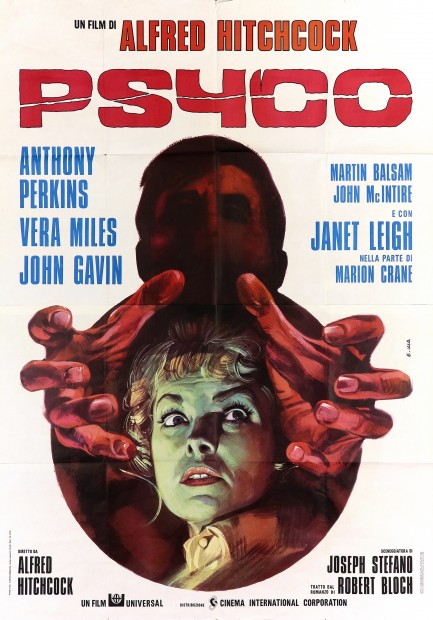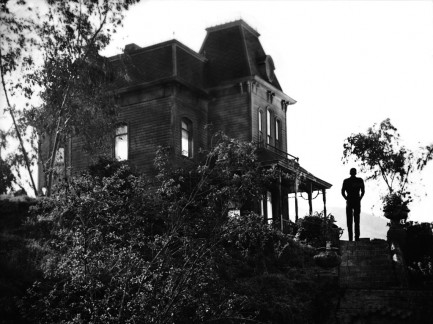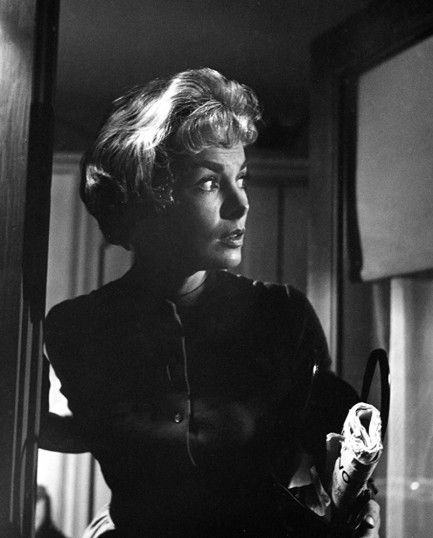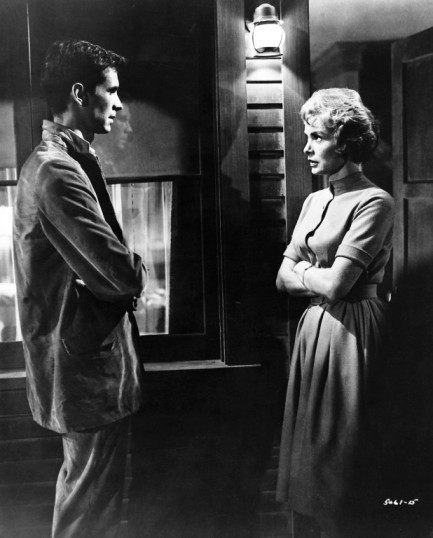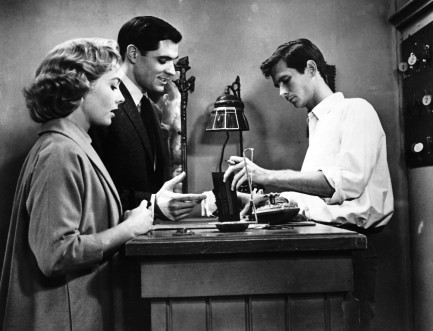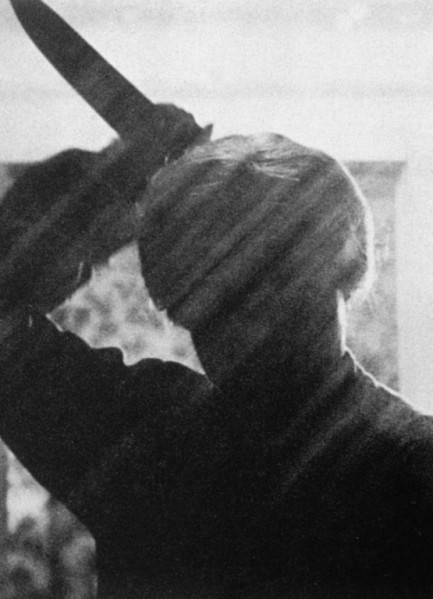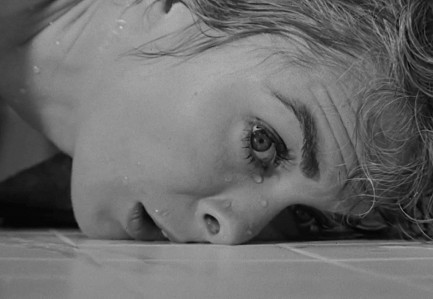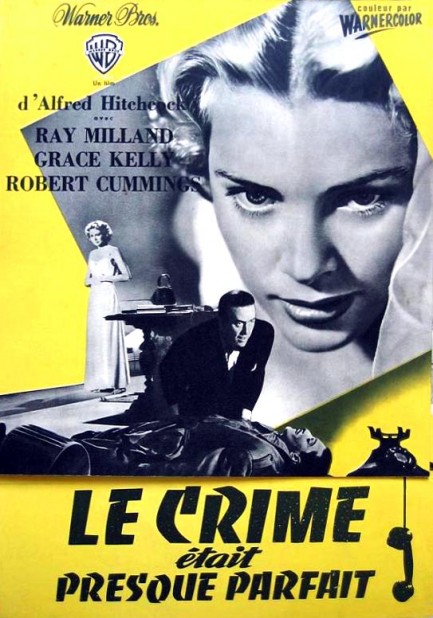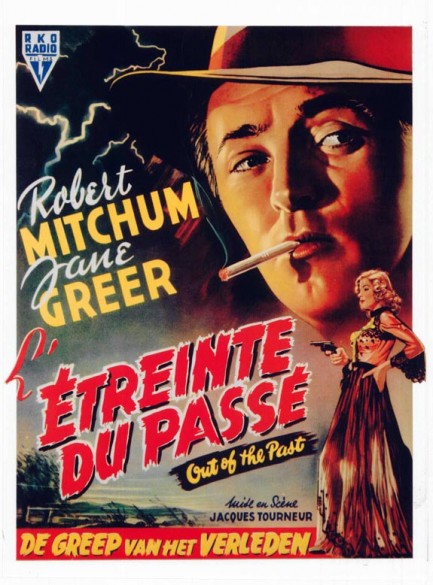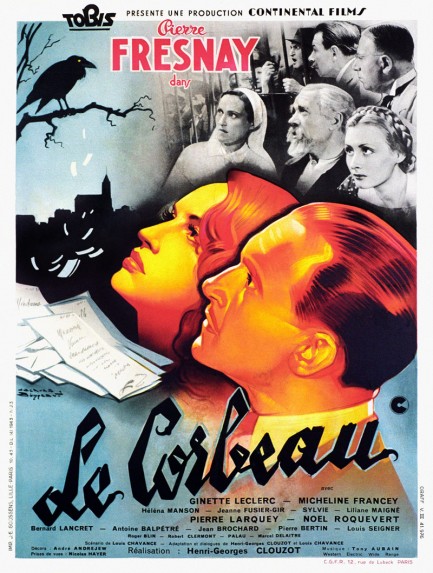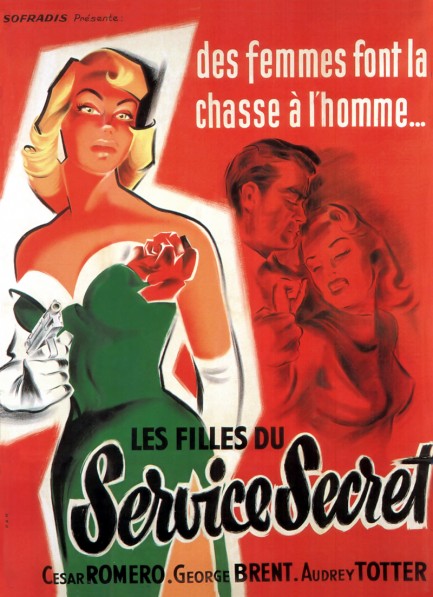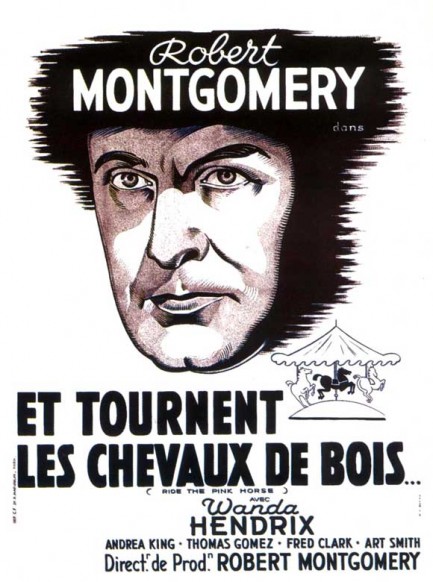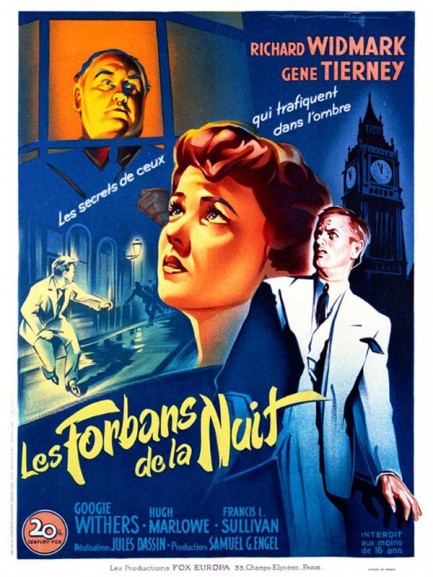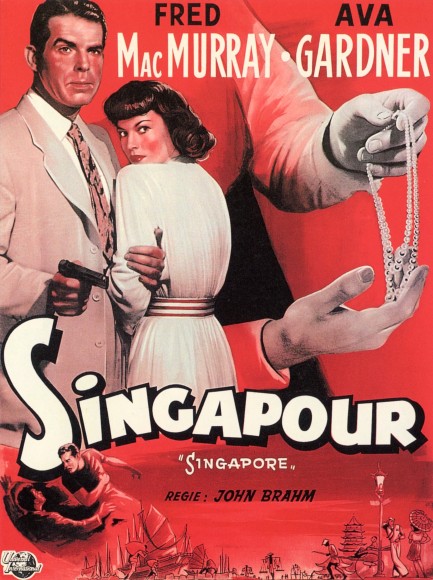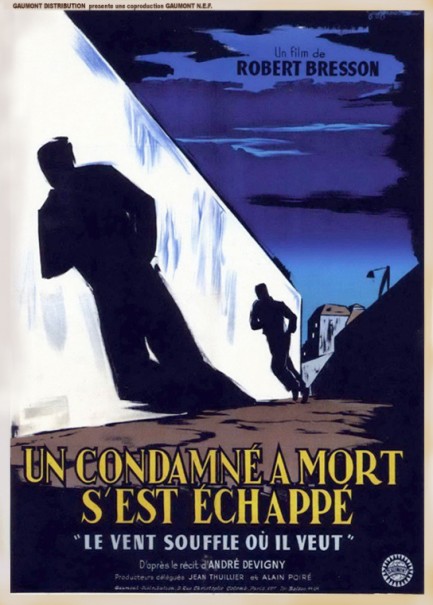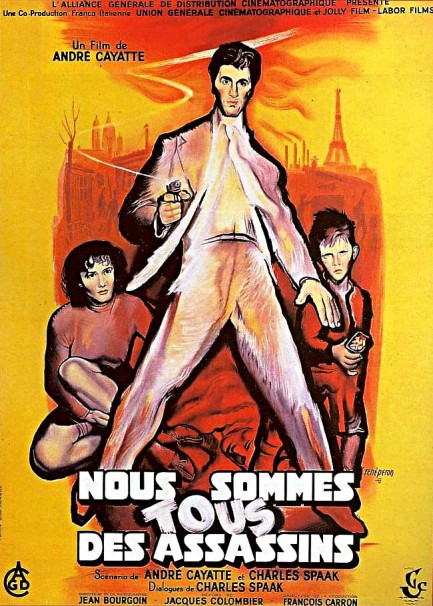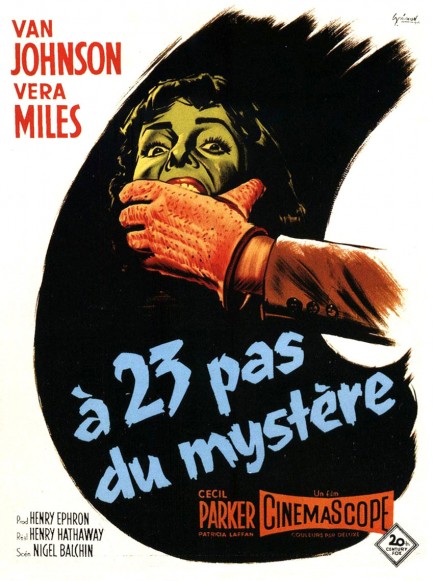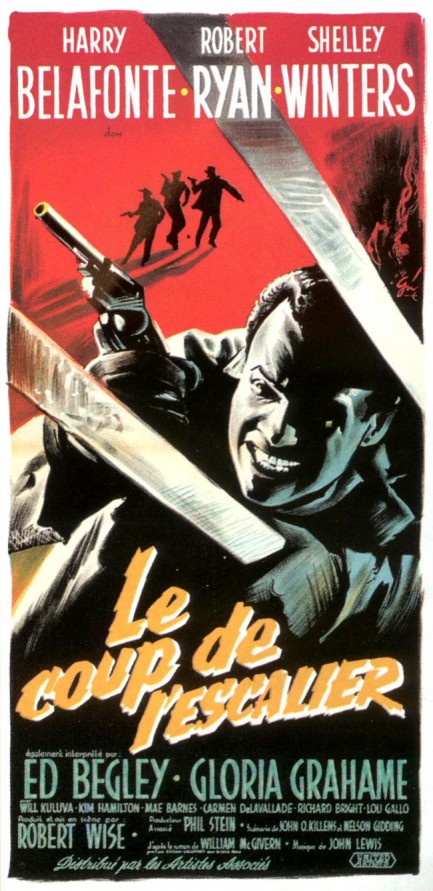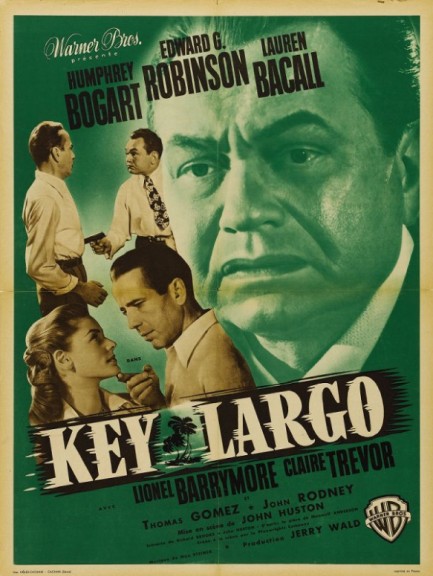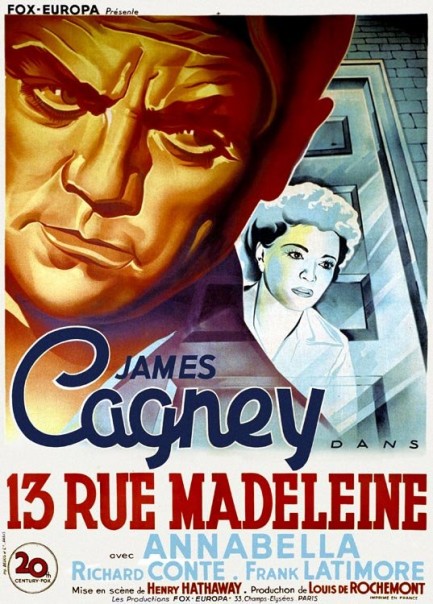 He was honest. Everyone else made the mistake. 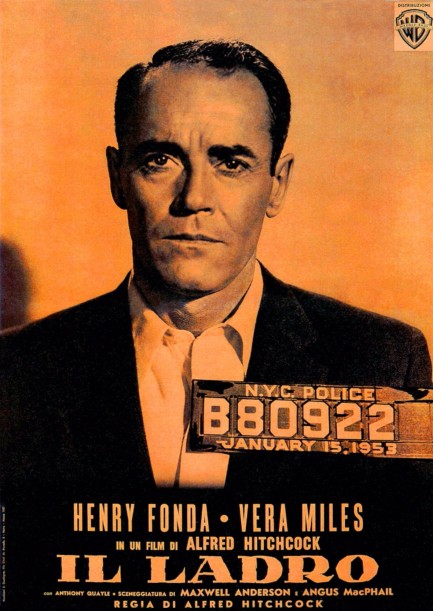
An array of posters were made for Alfred Hitchcock's crime drama The Third Man, which was titled in Italy simply Il ladro—“the thief”—but we've chosen this unusual mugshot based promo because it encapsulates the film nicely. The tired look on star Henry Fonda's face says it all. He's mega-screwed. There are probably other movies that took the mugshot route with their poster art, but we can't remember seeing any examples. For Il ladro, the mugshot poster was part of a series of photo promos taken from various frames in the film, but today we'll just share the one above. Also, below you'll see two more Italian posters painted by Luigi Martinati. It's rare that we prefer photo art to paintings, but this case, because of the subject matter of the film, is one of those exceptions.
Said subject matter is the true tale of Emmanuel Balestrero, an everyman who is falsely identified as an armed robber. This leads to his arrest, ordeal in jail, trial, and retrial. The movie hails from a more naive time, before Americans realized that when the police come asking questions the only answer you give is: “Am I under arrest?” And if the answer is yes, the next thing you say is: “Lawyer,” and that's all you ever say. It's crucial never to talk, because in the U.S. cops are allowed to lie to you, claim there are witnesses that don't exist, or that there's evidence they don't really have. That isn't legal in England, Australia, New Zealand, and many other countries. But Fonda doesn't know any of that, and ultimately that's largely why he ends up behind bars.
After he makes bail he and co-star Vera Miles pound the pavement investigating the false accusation. We doubt that happened in real life, but that's the movies for you. Their amateur sleuth bit works fine narratively. There's a psychological digression that's less compelling, but was included because it was part of the true story. On the whole, though, we like the movie. And we like Hitchcock's style here during his middle phase (he began directing in 1922 and finished in 1976), before high concept thrillers like Vertigo and Rear Window—though those are also good. Here he keeps it mostly basic, and the result is a harrowing drama, which is hard to bear as Fonda is slowly railroaded, but is extremely well put together and compellingly acted. The Wrong Man premiered in the U.S. in 1956 and reached Italy today in 1957.
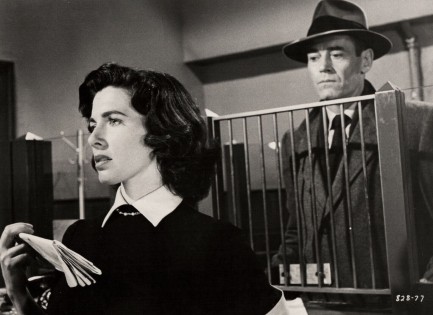 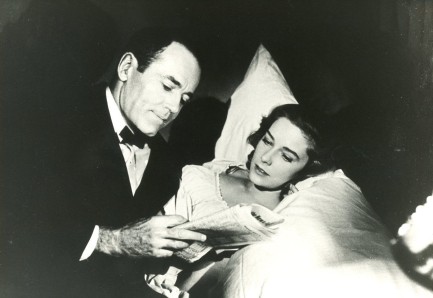 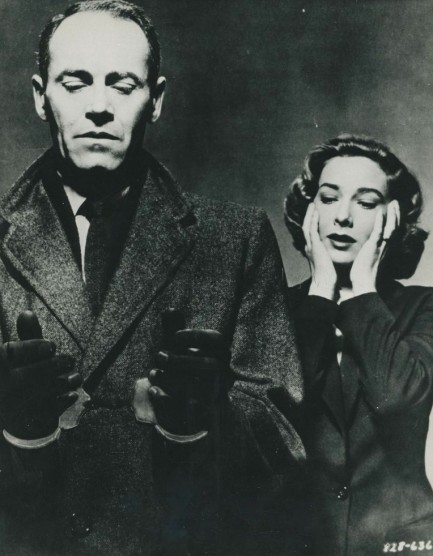 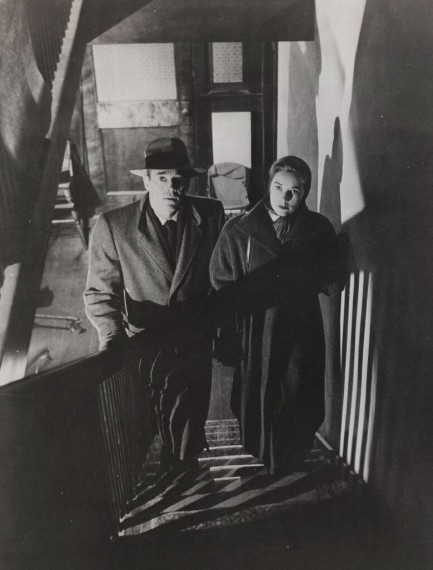 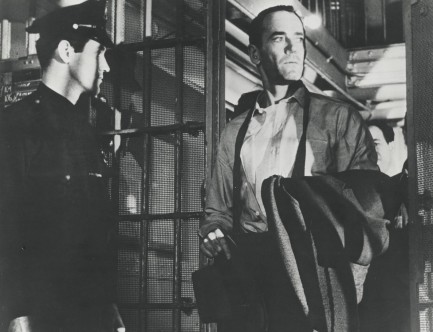 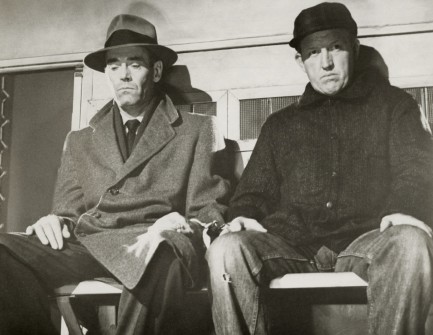 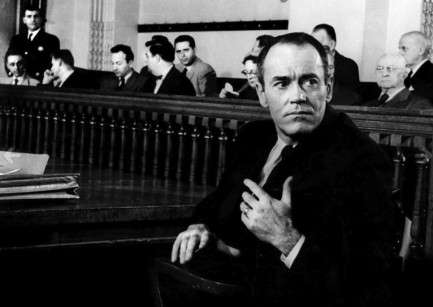 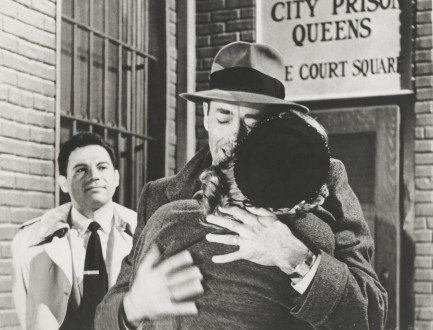 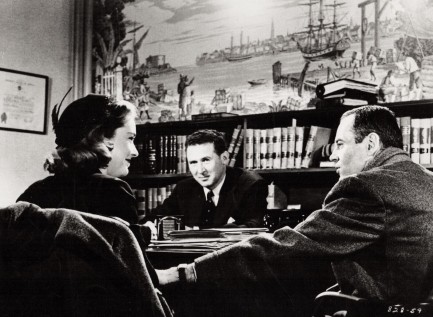 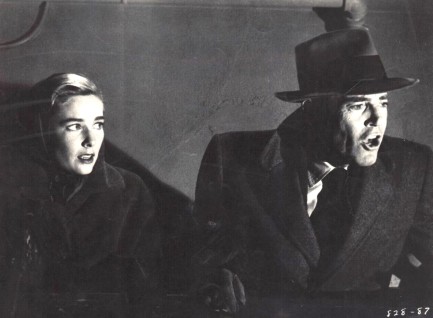 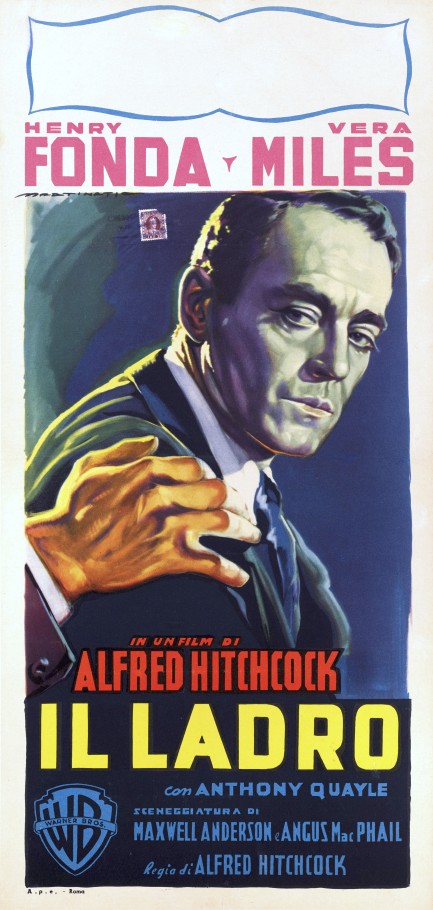 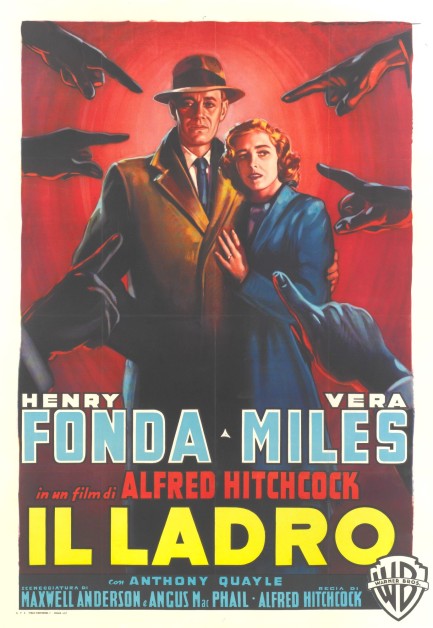
 An American crime story. 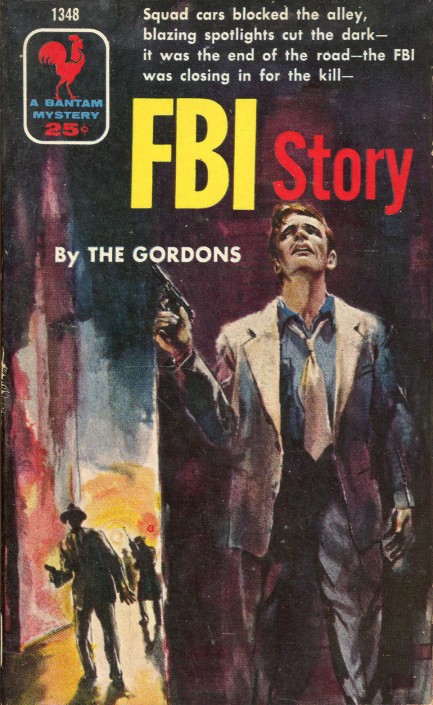 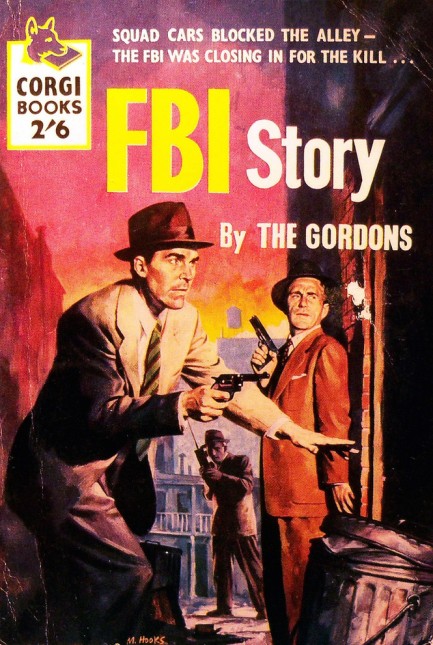
Written by The Gordons, who were the tandem of spouses Gordon Gordon and Mildred Gordon, FBI Story follows Agent John Ripley as he investigates the disappearance of a woman named Genie. She's wanted for theft by the FBI, and by the Los Angeles police as a person of interest in a murder case. Ripley finds that he and the missing woman have a lot in common, a fact revealed by his perusal of her bookshelf and diary. Is she really a criminal or just a desperate woman in deep trouble? As the investigation unfolds and the search spans the entire United States, we learn that other people are after her, including a millionaire American fascist who looks like Hitler and rants about the master race. Eventually Ripley uncovers jewel thievery, treason, and the mysterious Genie herself. Originally published in hardback on the heels of World War II in 1950, FBI Story delves deeply into the weariness and cynicism of combat vets, of which Ripley is one, yet all the agents are unswervingly dutiful and honest. Considering the fact that the novel is dedicated to J. Edgar Hoover, one could be excused for branding it propaganda. In fact, Gordon Gordon was an ex-FBI agent and had J. Edgar Hoover approve his work. Even so, FBI Story is generally considered a good read. It was later turned into a movie starring James Stewart and Vera Miles. The Bantam edition of the book is from 1955 with uncredited art, and the Corgi one appeared in 1957 with Mitchell Hooks on the cover chores.
 Italian master’s genius spanned decades.
Back in August we showed you a poster from Luigi Martinati, who worked from 1923 to 1967, and said we'd get back to him. Below, seven more great promotional pieces with his distinctive signature on each.
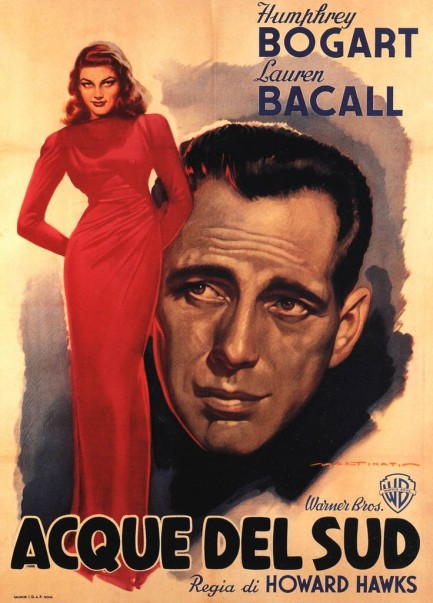 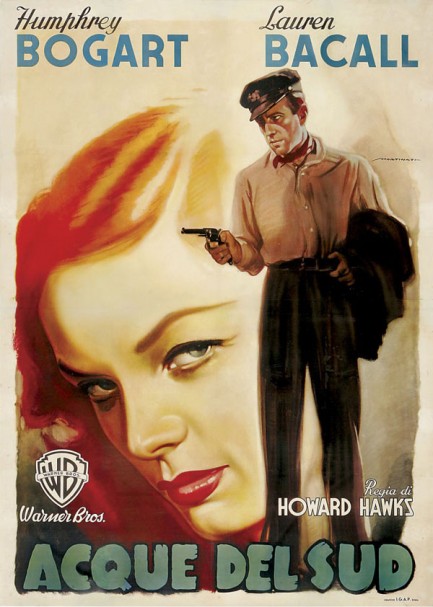
To Have and Have Not 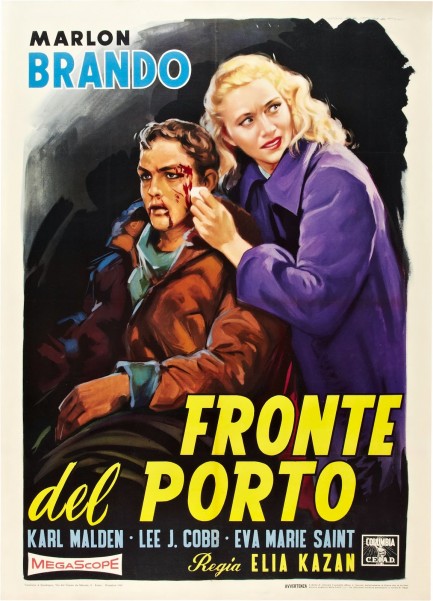
On the Waterfront 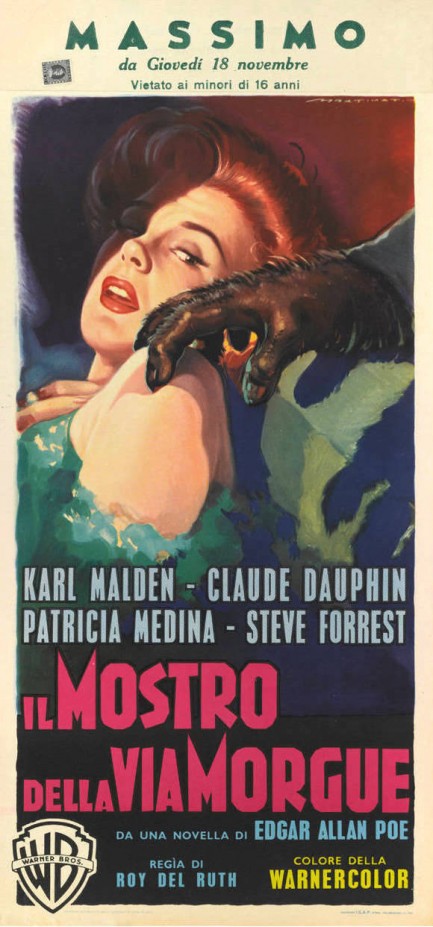
Phantom of the Rue Morgue 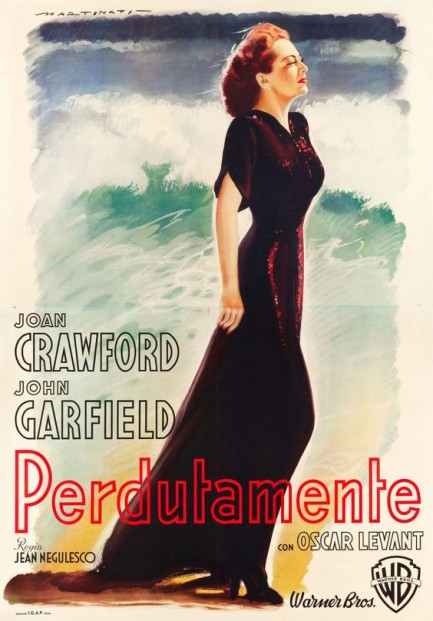
Humoresque 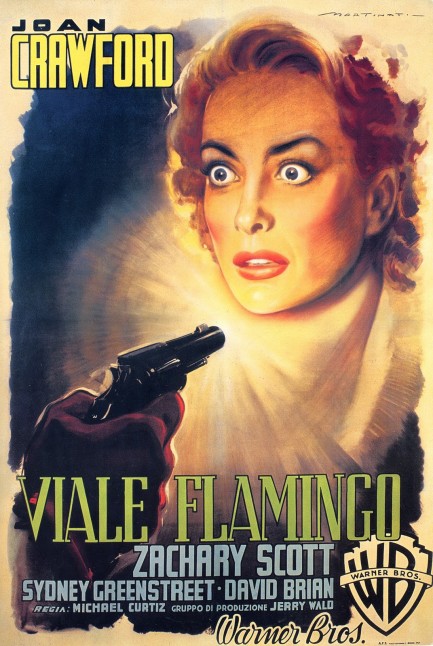
Flamingo Road 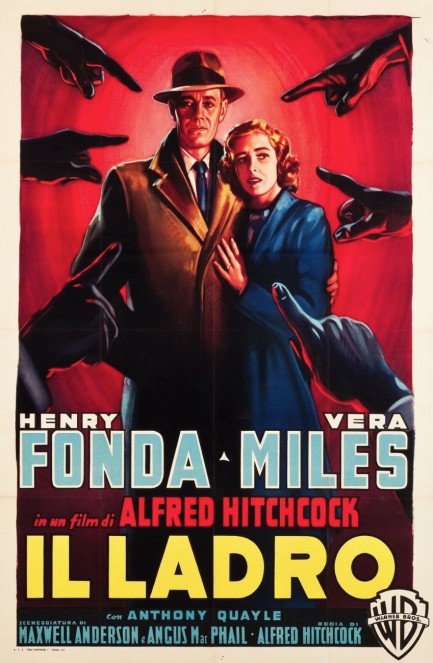
The Wrong Man
 Even visionary filmmakers sometimes don't see clearly. 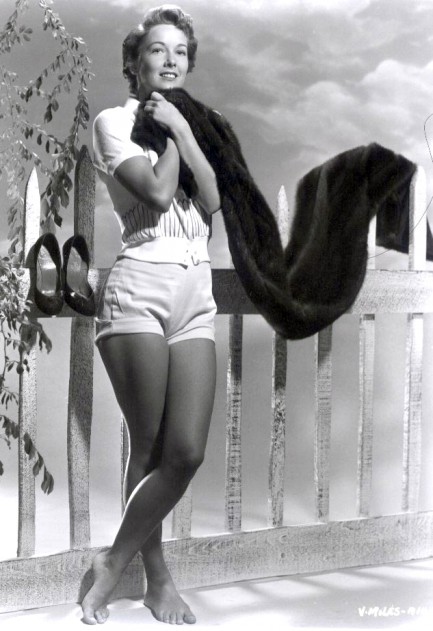
Vera Miles is most famous as the actress who gets to survive Alfred Hitchcock’s Psycho. She worked with Hitchcock on many films, but had other worthy roles, including in The Man Who Shot Liberty Valance, The Wrong Man, and just about every television detective series of the 1970s. She claims she was never able to never please Hitchcock because she wasn’t sexy enough. This shot proves Alfred needed glasses. It’s circa 1955.
 The lesson here is to always remember to bring a beach chair. 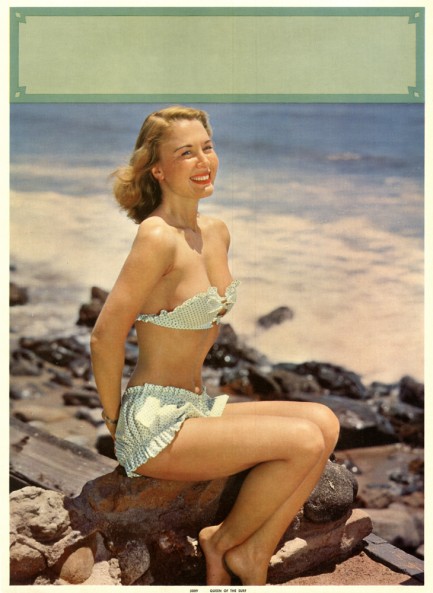 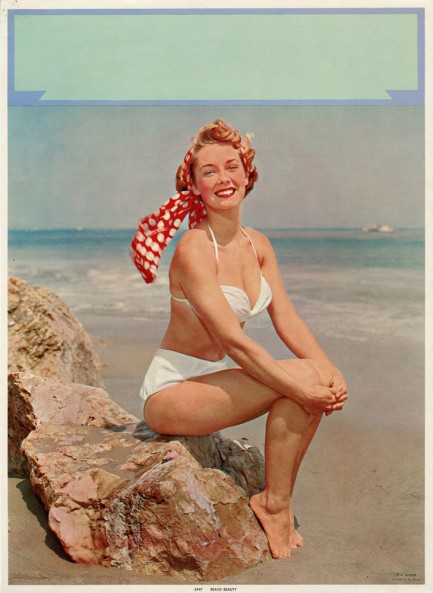
These two summery Technicolor lithographs featuring unknown models on uncomfortable perches were made in the mid-1950s. The first is called “Queen of the Surf” and the second is “Beach Beauty” (showcasing the always lovely summer headscarf look), both from the A. Scheer Company.
Edit 2022: The second model is now identified as U.S. actress Vera Miles.
 Ralph, this wasn’t what I meant when I said I needed a little pick-me-up. 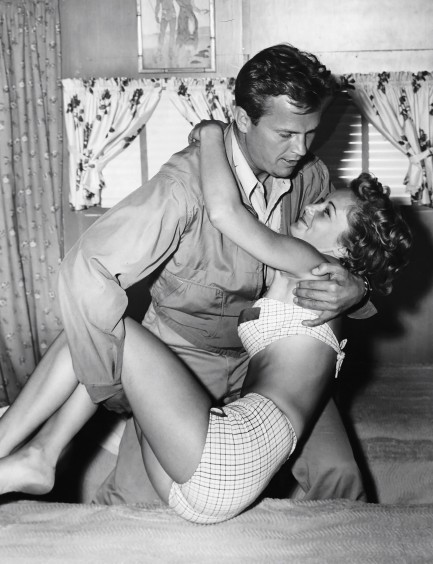
Ralph Meeker and Vera Miles joke around on the Hollywood set of the television series Alfred Hitchcock Presents. The episode they starred in was the series debut “Revenge,” and is considered by many to be the pinnacle of the show’s seven-year run. Meeker would appear in three more episodes of the series and many movies, while Miles would co-star memorably in Hitchcock’s Psycho. The photo dates from 1955.
 Only the good go to sleep at night. 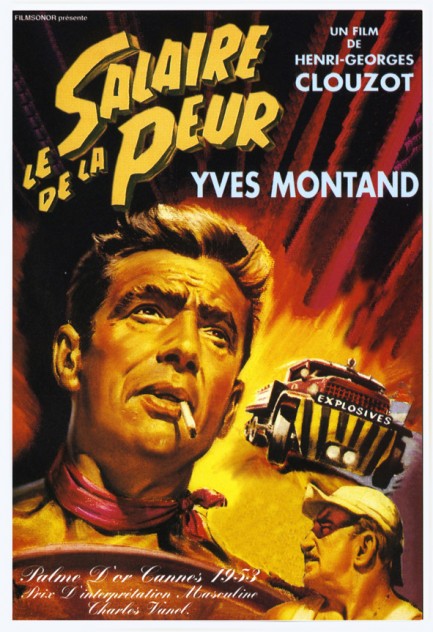
The French coined the term film noir, so it seems only fitting to feature a collection of French posters celebrating the genre. Above and below are fifteen examples promoting films noir from France, Britain, and the U.S., representing some of the best ever produced within the art form, as well as some less celebrated examples that we happen to love. Of those, we highly recommend seeing Le salaire de la peur, for which you see the poster above, and Ride the Pink Horse, below, which played as Et tournent les chevaux de bois in France. Just a word about those films (and feel free to skip ahead to the art, because really, who has time these days to listen to a couple of anonymous internet scribes ramble on about old movies?). 1953’s Le salaire de la peur is about a group of men stranded in an oil company town in the mountains of Latin America. In order to earn the wages to get out, four of them agree to drive two trucks filled with nitroglycerine over many miles of dangerous terrain. The idea is to use the chemicals to put out a raging oil well fire that is consuming company profits by the second, but of course the film is really about whether the men can even get there alive. Le salaire de la peur was critically praised when released in Europe, but in the U.S., political factions raised their ugly heads and got censors to crudely re-edit the prints so as to reduce the movie’s anti-capitalist (and by extension anti-American) subtext. The movie was later remade by Hollywood twice—once in 1958 as Hell’s Highway, and again in 1977 as Sorcerer. The original is by far the best.
1947’s Ride the Pink Horse is an obscure noir, but a quintessential one, in our opinion. If many noirs feature embittered World War II vets as their anti-heroes, Robert Montgomery’s Lucky Gagin is the bitterest of them all. He arrives in a New Mexico border town on a quest to avenge the death of a friend. The plot is thin—or perhaps stripped down would be a better description—but Montgomery’s atmospheric direction makes up for that. Like a lot of mid-century films featuring ethnic characters, the most important one is played by a white actor (Wanda Hendrix, in a coating of what looks like brown shoe polish). It's racist, for sure, but within the universe of the film Lucky Gagin sees everyone around him only as obstacles or allies—i.e., equals within his own distinct worldview. So that makes up for it. Or maybe not. In any case, we think Ride the Pink Horse is worth a look. Thirteen more posters below.
 She’s so going to need therapy after this. 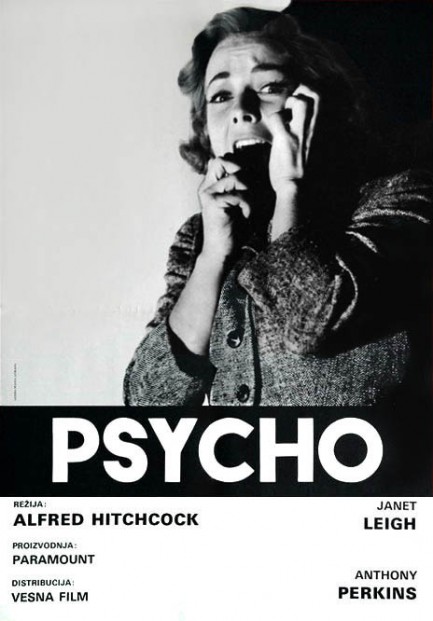
Here’s a rarity. It’s a poster from the former Yugoslavia (such items are commonly referred to as “Exyu”) for Alfred Hitchcock’s Psycho, featuring a photo, not of doomed Janet Leigh who met her end in the shower, but of Vera Miles, who plays Leigh’s sister. With the help of John Gavin, Miles ends up poking around the Bates Motel looking for clues to her sis’s disappearance. Safe to say she never expected what she found. See a Czech Psycho poster here.
 The women inside the movie camera.
Below are eighteen timeless Hollywood leading ladies, some well-known, some less so, but all gleamingly beautiful. They are, top to bottom, Mari Blanchard, Carmen Phillips, Grace Kelly, Jane Adams, Joan Vohs, Martha Hyer, Laurette Luez, Tippi Hedren, Marguerite Chapman, Janet Leigh, Venetia Stevenson, Annabella, Muriel Barr, Lana Turner, Kim Novak, Paula Drew, Ann-Margret, and Vera Miles. Happy New Year.
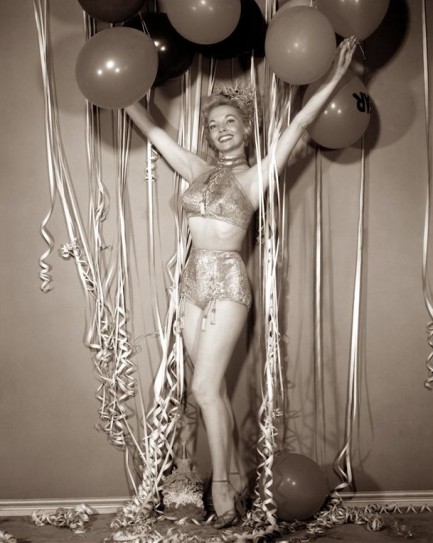 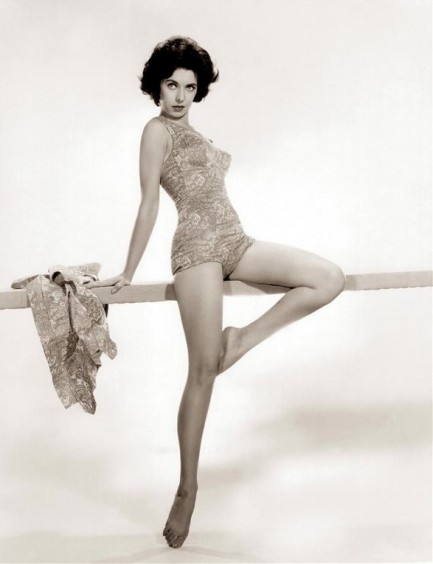 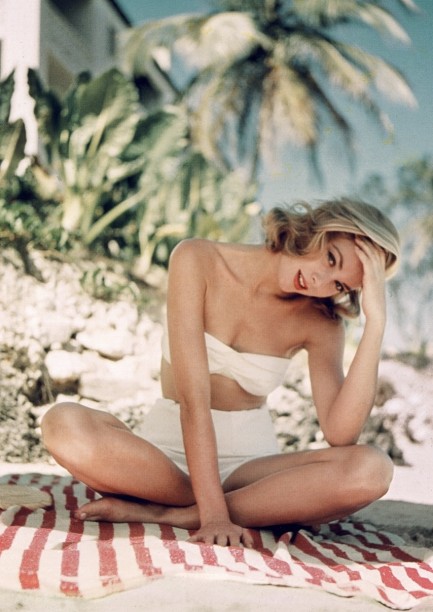 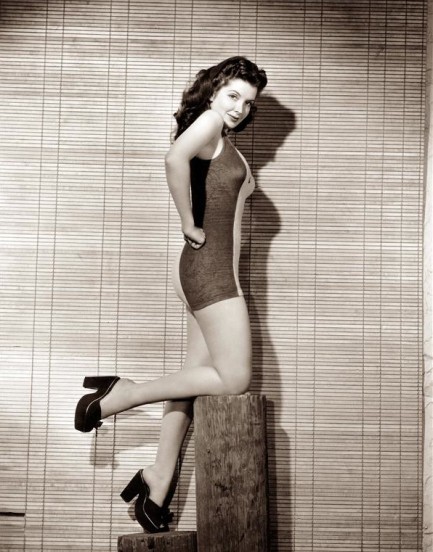 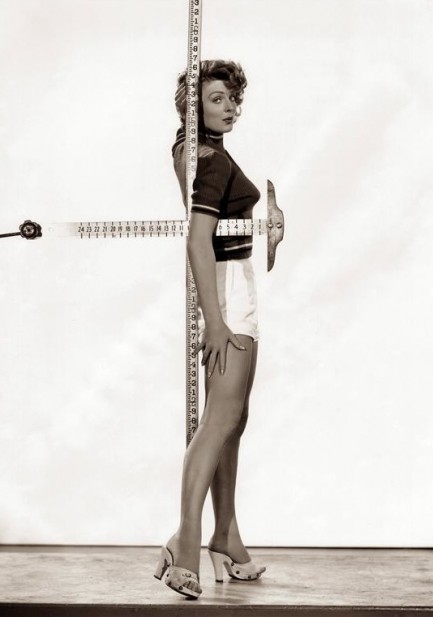 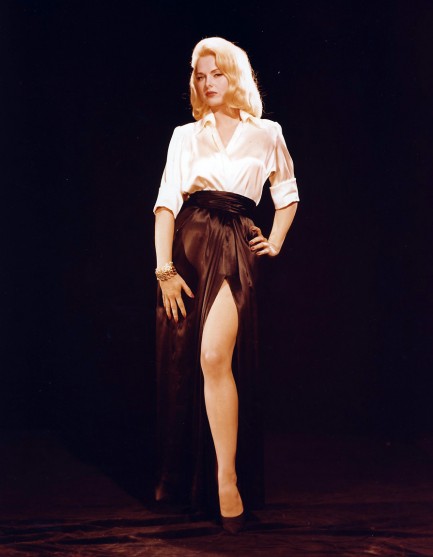 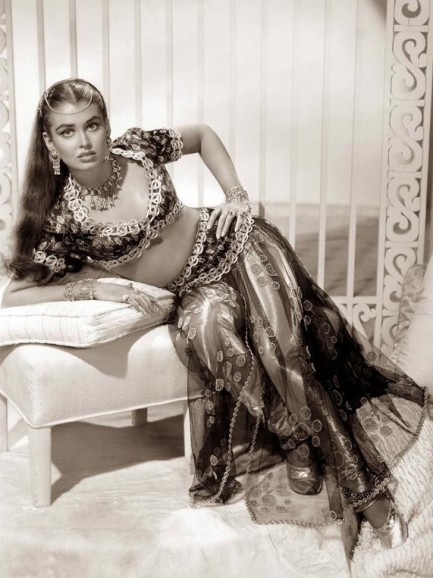 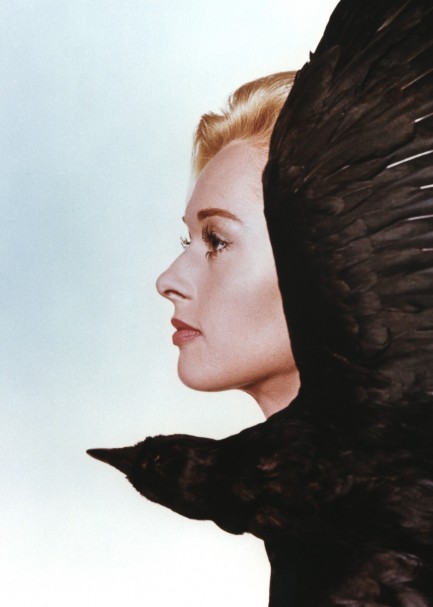 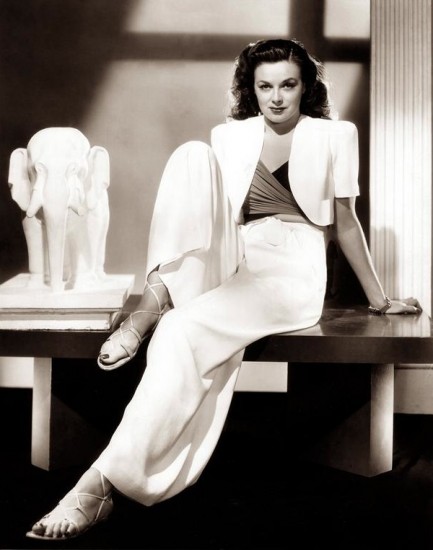 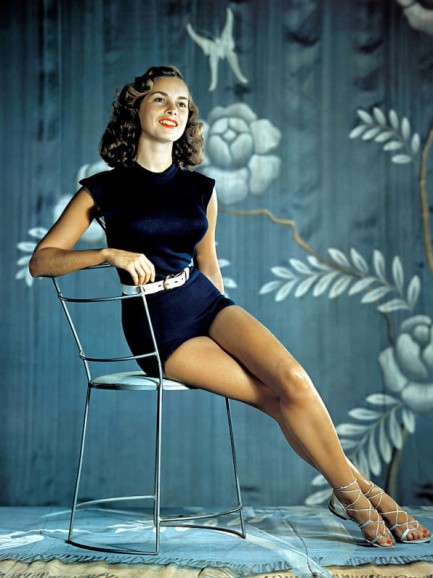 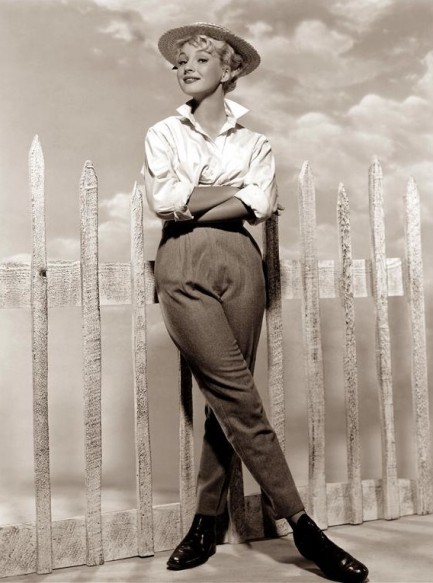  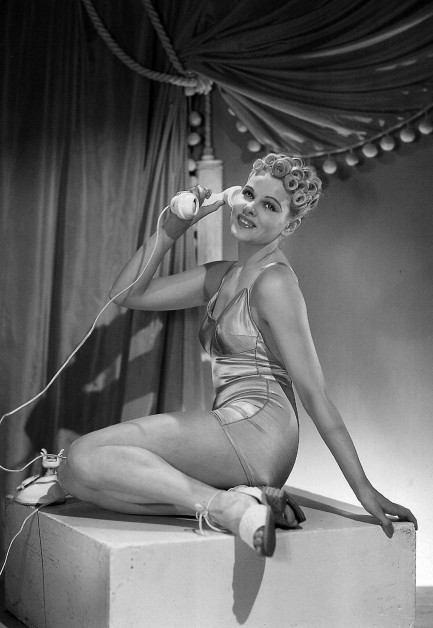 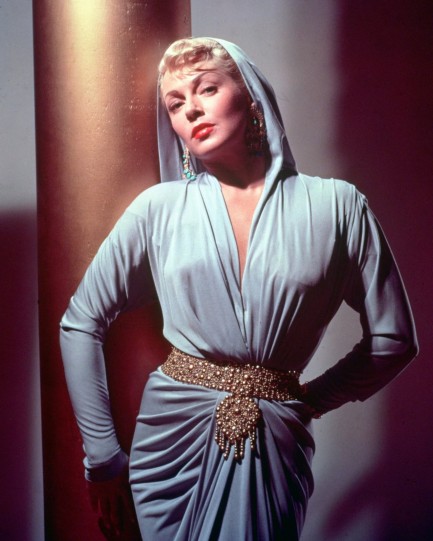 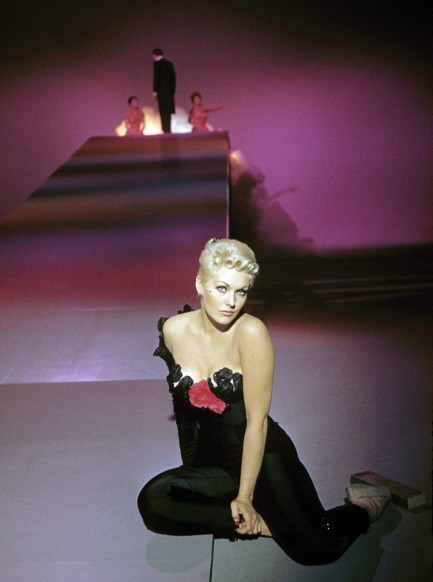 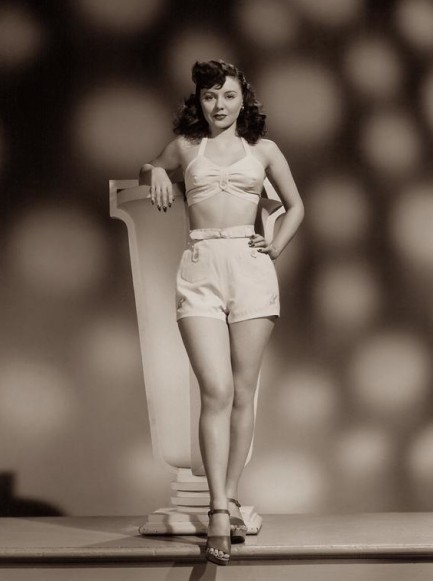 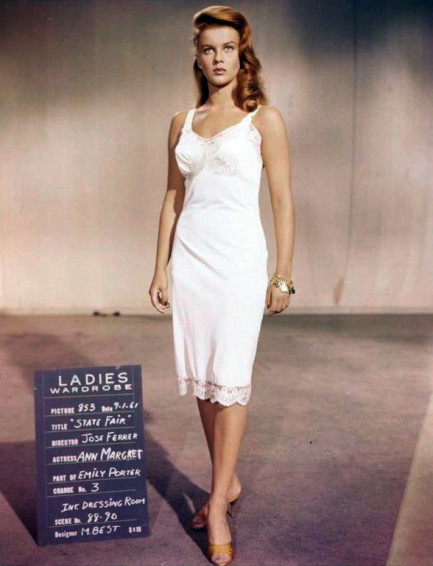 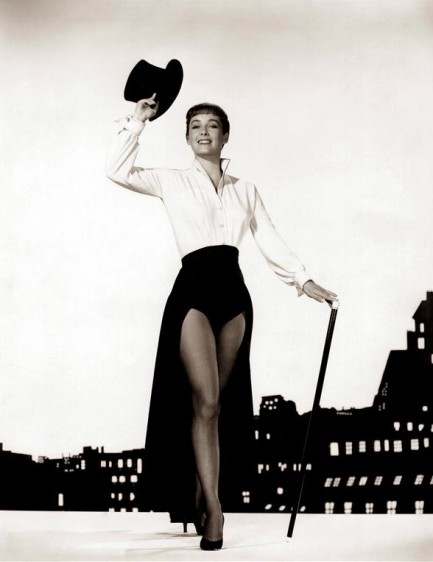
|
 |

The headlines that mattered yesteryear.
2003—Hope Dies
Film legend Bob Hope dies of pneumonia two months after celebrating his 100th birthday. 1945—Churchill Given the Sack
In spite of admiring Winston Churchill as a great wartime leader, Britons elect
Clement Attlee the nation's new prime minister in a sweeping victory for the Labour Party over the Conservatives. 1952—Evita Peron Dies
Eva Duarte de Peron, aka Evita, wife of the president of the Argentine Republic, dies from cancer at age 33. Evita had brought the working classes into a position of political power never witnessed before, but was hated by the nation's powerful military class. She is lain to rest in Milan, Italy in a secret grave under a nun's name, but is eventually returned to Argentina for reburial beside her husband in 1974. 1943—Mussolini Calls It Quits
Italian dictator Benito Mussolini steps down as head of the armed forces and the government. It soon becomes clear that Il Duce did not relinquish power voluntarily, but was forced to resign after former Fascist colleagues turned against him. He is later installed by Germany as leader of the Italian Social Republic in the north of the country, but is killed by partisans in 1945.
|

|
|

It's easy. We have an uploader that makes it a snap. Use it to submit your art, text, header, and subhead. Your post can be funny, serious, or anything in between, as long as it's vintage pulp. You'll get a byline and experience the fleeting pride of free authorship. We'll edit your post for typos, but the rest is up to you. Click here to give us your best shot.

|
|















